Some anime battles don’t just define a series — they define an era. They become moments etched into the fabric of anime history, replayed endlessly in memory and conversation, setting the bar for everything that comes after.
These clashes go beyond mere spectacle. They are stories within stories — explosions of emotion, artistry, and purpose. Behind every punch, every flash of power, and every desperate scream lies something deeper: love, vengeance, redemption, or the unbreakable will to protect. They’re where animation turns into poetry, and where characters transcend ink and frame to become legend.
From the golden age of classics to today’s cinematic masterpieces, these battles remind us why anime is more than just entertainment — it’s art in motion. Every swing of a blade, every spark of energy, every final stand carries weight and meaning, shaping heroes and worlds alike.
These are the moments that leave fans breathless — the kind that make your heart race, your soul ache, and your spirit ignite. Because in the best anime battles, victory isn’t just earned…
It’s felt.
Monkey D. Luffy vs. Kaido — The God of Thunder Meets the Sun of Freedom
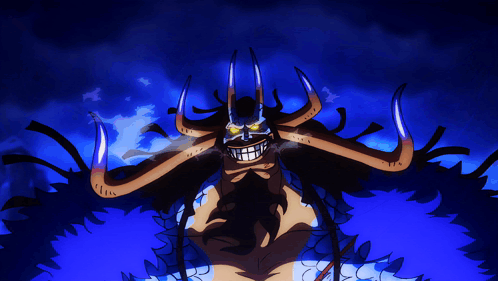
In the vast ocean of One Piece’s adventures, few moments hit as hard — or shine as bright — as Luffy’s legendary clash with Kaido. It’s not just a battle between two titans; it’s the collision of ideals, wills, and the very definition of freedom itself.
At its heart, One Piece has always been about dreams — the impossible kind that make people laugh. For Monkey D. Luffy, that dream has never changed: to become the Pirate King and sail unbound across a world chained by power. Standing in his way is Kaido, the self-proclaimed “Strongest Creature,” a towering symbol of dominance and despair who rules through fear.
Their battle in the Wano Country Arc is more than a fight — it’s a revolution. When Luffy awakens Gear Five, the long-awaited evolution of his power, he doesn’t just grow stronger — he transcends. His body becomes as fluid as imagination itself, blurring the line between god and cartoon, chaos and creativity. The world bends to his laughter. Reality dances to his will.
That moment — Luffy grinning in the face of destruction, light bursting behind him as Kaido roars from below — captures everything One Piece stands for. Joy over tyranny. Freedom over control. Laughter in the face of pain.
What makes this showdown unforgettable isn’t just the mind-blowing animation or the divine energy of Gear Five — it’s the meaning behind it. It’s Luffy proving that even in a world of monsters and emperors, the human spirit is the most unstoppable force of all.
The fight between Luffy and Kaido isn’t just a battle for Wano — it’s a battle for hope itself.
And when Luffy’s heartbeat sings to the rhythm of drums of liberation, the world finally listens — because in that moment, the boy who dreamed of freedom becomes its very embodiment.
Sung Jinwoo vs. The Ant King — When the Weakest Became the Apocalypse
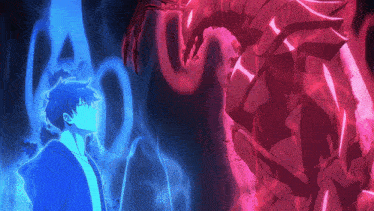
In a world built on hierarchy and fear, Sung Jinwoo once stood at the very bottom — the weakest hunter, fragile and forgotten. But Solo Leveling is not the story of a man who stayed weak. It’s the story of one who shattered every limit, tore through every rule, and rose to become something beyond human.
By the time Jinwoo sets foot on Jeju Island, the atmosphere itself feels heavy with dread. The island — long lost to an S-rank gate overflowing with monstrous ants — stands as humanity’s greatest failure. And within it lurks the Ant King, a predator among predators, a beast that even the mightiest hunters could not overcome.
But when Sung Jinwoo arrives, the tide shifts. No hesitation. No fear. Only the sound of wings slicing the air — and the quiet, certain confidence of a man who knows exactly what he has become. The Ant King, a creature of impossible power, lunges with savage pride. Jinwoo doesn’t flinch. He moves like shadow — smooth, silent, inevitable.
The clash that follows is pure awe. Blades of darkness explode through the air as Jinwoo dismantles the monster that once terrorized nations. Every strike feels divine — the culmination of all his pain, all his hunger, all the quiet rage of being underestimated. It’s not a fight; it’s an execution written in glory and shadow.
And when it ends — when the Ant King falls — it’s not just victory. It’s vindication. The weakest hunter has become the Shadow Monarch, the very embodiment of power. The entire world, watching in disbelief, finally understands:
Sung Jinwoo isn’t climbing the ranks anymore. He is the ranking.
A one-man army. A living apocalypse.
The day he fought the Ant King wasn’t a battle — it was the moment a god was born.
Katsuki Bakugo vs. All For One — The Explosion That Shook Heaven
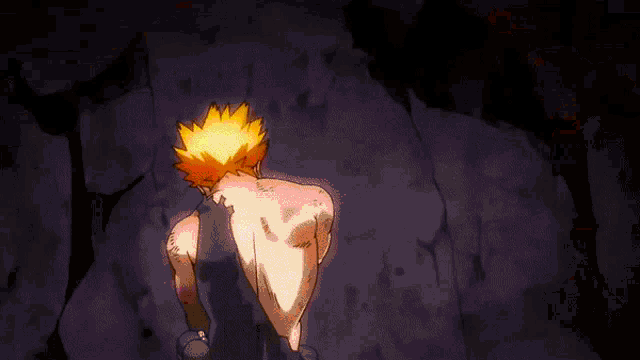
In the blazing heart of My Hero Academia’s Final War Arc, where heroes and villains collide in a storm of chaos and conviction, one explosion rises above them all — Katsuki Bakugo’s final stand against All For One. It isn’t just a battle. It’s a resurrection.
From the very beginning, Bakugo was the embodiment of untamed fire — prideful, relentless, and desperate to prove that he could stand among the greatest. Born with an explosive quirk and an even more explosive temper, his journey was never just about power — it was about purpose. And when he faces All For One, the embodiment of absolute evil, Bakugo’s story reaches its ultimate ignition point.
Revived from death’s doorstep, battered but unbroken, Bakugo charges back into battle with a defiance that feels godlike. His body is screaming in pain, his heart is barely beating — and yet, his spirit burns brighter than any quirk could ever shine. Every blast from his palms is a declaration: “I’m not done yet.”
The moment he fights beside Deku, their paths finally converge — not as rivals, but as equals, two sides of the same heroic flame. Where Deku’s power is born from hope, Bakugo’s is forged in pride, pain, and raw determination. Against All For One, that energy explodes into something transcendent — a storm of light that pushes the limits of what a hero can be.
This isn’t just Bakugo’s greatest fight. It’s his apotheosis. The culmination of years of rage, growth, and redemption — a moment where he becomes everything he once mocked, feared, and aspired to be. His explosions don’t just destroy; they inspire.
When Bakugo stands against All For One, it isn’t victory he seeks — it’s meaning. It’s his chance to prove, not to others, but to himself, that his fire was never just noise. It was the heartbeat of a hero who refused to die quietly.
And in that moment — covered in blood, bathed in light — Katsuki Bakugo doesn’t just fight like a hero.
He becomes one.
A symbol of fury, resolve, and brilliance — an explosion that echoes through eternity.
Chainsaw Man vs. Bomb Devil — Love, Blood, and the Beauty of Destruction

In the chaotic, blood-soaked world of Chainsaw Man, where love and violence often share the same heartbeat, few moments hit harder — or hurt deeper — than the devastating clash between Denji and Reze, the Bomb Devil.
After a lifetime of loneliness and debt, Denji’s life had finally started to bloom. Between the constant battles and carnage, he found something resembling warmth — a spark of affection in Reze, a girl who seemed to see the human beneath the monster. Their connection was fragile, awkward, and painfully real… until it wasn’t.
When the truth ignites — when Reze reveals herself as the Bomb Devil, sent to kill him — everything Denji thought he understood about love and safety detonates. Their ensuing battle is as heartbreaking as it is breathtaking. MAPPA’s artistry transforms the city into a stage of chaos — a ballet of blood and heartbreak, where explosions paint the night sky and chainsaws scream through smoke and sorrow.
But beneath the carnage, Reze vs. Denji isn’t just about power — it’s about tragedy. It’s two broken souls forced to destroy the only thing that made them feel whole. Reze’s bombs are as beautiful as they are deadly, her explosions bursting like fireworks — bright, brief, and gone too soon. And Denji, torn between desire and duty, fights with the weight of a heart that still beats for her.
The Reze Arc delivers more than spectacle — it’s a masterpiece of emotional storytelling disguised as a fight scene. It’s love turned weapon, affection turned shrapnel. Even as the world burns, the pain between them feels more human than anything else.
And when it’s over — when the smoke clears and silence settles — it isn’t victory that remains, but emptiness. Denji wins the battle, but loses something far greater: the fragile dream that maybe, just maybe, someone could love the boy beneath the chainsaw.
Chainsaw Man vs. Bomb Devil isn’t just an explosive showdown — it’s a tragedy wrapped in fire, a love story carved in steel and sorrow.
Because in the world of Chainsaw Man, even love comes with a kill switch.
Saber Alter vs. Rider — Beauty, Corruption, and the Tragedy of Power
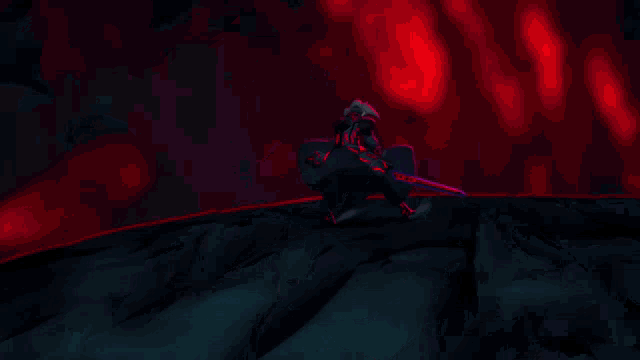
In Fate/Stay Night: Heaven’s Feel III — Spring Song, the curtain falls on one of anime’s most haunting and emotional sagas. It’s not just the end of a story — it’s the collapse of ideals, the corrosion of purity, and the birth of something achingly beautiful within the darkness.
As Shirou Emiya fights to save Sakura Matou from the consuming corruption of the Holy Grail, the world around him becomes a battlefield of fractured loyalties and fading hope. But amid the chaos, one clash steals the breath of every viewer — the devastating confrontation between Saber Alter and Rider.
Once the noble King of Knights, Saber now stands shrouded in darkness — Saber Alter, a twisted mirror of her former self. Her brilliance turned cold, her light devoured by shadow, she is both terrifying and tragic — a fallen angel bound by corruption. Opposing her is Rider, graceful yet lethal, her movements like poetry in motion, each strike radiating defiance and quiet sorrow.
Their battle is more than an exchange of blows — it’s a collision of philosophies and fates. Rider fights not out of duty, but devotion, determined to protect Sakura, even if it means facing the corrupted king who once stood for justice itself. The animation — fluid, visceral, and alive — captures every spark, every slash, every tremor in the air as power and emotion intertwine in a dance of divine destruction.
Every impact reverberates with symbolism — the fall of heroism, the cost of salvation, and the fragile beauty of sacrifice. What makes this fight unforgettable isn’t just its scale or artistry — it’s its emotion. You can feel the weight behind every strike, the grief behind every glare, the echo of what once was and what can never be again.
When Saber Alter’s blade clashes with Rider’s chain, it isn’t just steel meeting steel — it’s light warring against the shadow of its own memory.
By the time the dust settles, the audience is left breathless — not because of who won, but because of what was lost. The Saber vs. Rider battle is Fate at its finest — raw, poetic, tragic, and transcendent.
A perfect embodiment of what the Heaven’s Feel route represents:
that sometimes, the most beautiful things are born not from light —
but from the darkness that dares to remember it.
Tanjiro Kamado and Giyu Tomioka vs. Akaza — The Beautiful Death of a Demon

In the crimson twilight of Demon Slayer’s Infinity Castle Arc, the line between life and death blurs — not in silence, but in a storm of blades, memory, and heartbreak. What unfolds between Tanjiro Kamado, Giyu Tomioka, and Akaza is not merely a battle. It is a requiem — a breathtaking dance of pain, respect, and release.
From the very beginning, Demon Slayer has been a story about love and loss — about the fragile humanity that survives even within monsters. And nowhere is that truth more visceral than in Akaza’s final stand. As the Upper Rank Three of Muzan’s Twelve Kizuki, Akaza is a demon of pure violence and beauty, his fists moving like poetry, his strikes echoing through the vast emptiness of the Infinity Castle. Yet beneath that power lies something tragically human — the memory of a boy who once sought strength to protect, not destroy.
When Tanjiro and Giyu face him, it’s more than a fight — it’s destiny intersecting with regret. Giyu’s stoic precision and Tanjiro’s unbreakable heart form a seamless rhythm, each movement born from years of pain and purpose. Akaza’s techniques, elegant yet merciless, crash against Tanjiro’s fiery will in a symphony of light and motion. Every blow feels alive — not just animated, but felt.
As the battle rages, Ufotable’s animation transcends spectacle — every spark of sword against skin, every flare of blood and flame, becomes a visual hymn. The choreography flows like breathing itself — fast, fluid, and heartbreakingly intimate. The sound design amplifies every moment — the wind of Akaza’s punches, the rise of Tanjiro’s breath, the silence before the final strike.
And then comes the moment of transcendence — when Akaza, pushed beyond all reason, confronts not his enemies, but his memories. The weight of his past crashes over him, his humanity clawing its way back through centuries of blood. The demon who once killed without mercy dies remembering what it meant to care — and that, more than his defeat, is his salvation.
Tanjiro and Giyu vs. Akaza is not simply the pinnacle of Demon Slayer’s animation — it’s the emotional heart of the series. It’s where the story’s themes of compassion, pain, and perseverance reach their most devastating beauty.
Because in that final moment — as the castle trembles and Akaza fades into nothing — we don’t just witness a battle.
We witness forgiveness.
We witness the end of hate.
And in the fading light, we’re reminded of what Demon Slayer has always been about:
not killing demons, but freeing the humans trapped within them.
Levi Ackerman vs. the Beast Titan — Humanity’s Rage Unleashed
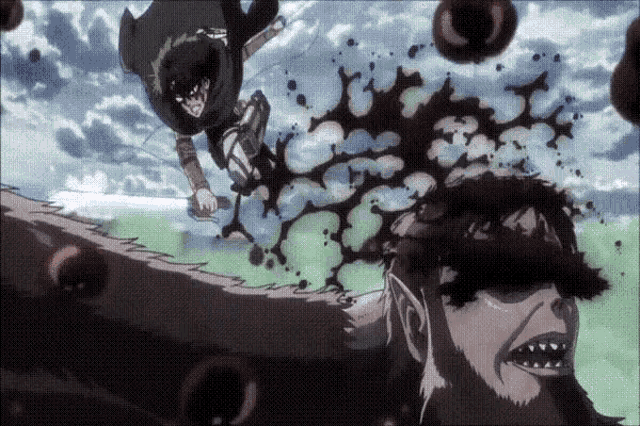
In a world where hope is devoured and despair wears the face of a giant, one man stands defiant — a blade against extinction, a whisper of vengeance in a dying world. Levi Ackerman, Humanity’s Strongest Soldier, doesn’t fight for glory. He fights for them — the fallen, the forgotten, the ones who gave everything and received nothing but silence in return.
The battlefield is a graveyard of courage. The Beast Titan, towering and calm in its cruelty, rains death upon the Scout Regiment with monstrous precision — hurling boulders that tear through human lines like paper. The Scouts know they cannot win. Yet, under the blazing sun of their final charge, they ride anyway — not to kill, but to buy a single man a chance.
That man is Levi.
What follows is not a fight. It’s a massacre — a ballet of violence choreographed by instinct and fury. As the Beast Titan mocks humanity’s futility, Levi strikes like a phantom — faster than breath, deadlier than vengeance itself. He weaves through the storm of rubble, blades glinting like lightning, carving through flesh and muscle until the sky itself seems to bleed.
The moment Levi’s blades find the Beast Titan’s eyes, it’s not triumph — it’s retribution. The rage of humanity condensed into one perfect, merciless instant. Every strike is for a comrade lost, every cut a promise kept. Levi doesn’t scream. He doesn’t celebrate. He executes.
It’s the kind of scene that makes the world stop — not just for its breathtaking animation or sheer brutality, but for what it means. It’s humanity, cornered and broken, refusing to die quietly. It’s the embodiment of the will to fight, no matter how hopeless the odds.
Levi vs. the Beast Titan is more than an action sequence — it’s a moment of myth. The Scout Regiment’s sacrifice becomes the spark that reignites defiance, and Levi’s vengeance becomes their vindication.
In a world where monsters reign, Levi Ackerman reminds us that humanity’s greatest weapon isn’t muscle or size —
it’s the unrelenting will to strike back, even when there’s nothing left to save.
That day, the Beast Titan met the storm.
And the storm’s name was Levi Ackerman.
Roy Mustang vs. Lust — The Inferno of Vengeance

In the heart of Fullmetal Alchemist: Brotherhood, a series built on sacrifice, sin, and the alchemy of the human spirit, one battle burns hotter than the rest — Roy Mustang vs. Lust. It’s not just a fight. It’s retribution set aflame.
The world of Amestris is one of deception and despair — a chessboard of gods and monsters. Among them stands Roy Mustang, the Flame Alchemist — a man whose calm exterior conceals a fury as precise as it is devastating. When his trusted comrade Riza Hawkeye is wounded and Lust, the embodiment of desire and cruelty, threatens to end her life, something inside Mustang ignites — not out of duty, but out of rage.
What follows is not strategy — it’s judgment. Mustang’s fingers snap, and the air itself becomes his weapon. Each spark blossoms into a firestorm that devours everything it touches. Lust, a being nearly immortal, regenerates again and again — only for Mustang to burn her down every single time. Each explosion isn’t just alchemy — it’s grief weaponized, vengeance distilled into flame.
The animation crackles with intensity as the shadows dance and the screen glows white-hot. Lust, once mocking, begins to fear. Her confidence turns to terror as Mustang’s eyes narrow, his voice cold and resolute — “You’re not even human.”
His flames don’t simply kill — they erase.
And when she finally collapses, ash scattered on the floor, it’s more than victory. It’s closure. Mustang’s rage burns away his restraint, leaving behind something raw and human — a reminder that beneath his rank and title lies a man who has lost too much and refuses to lose more.
Roy Mustang vs. Lust isn’t just one of Brotherhood’s best fights — it’s a masterclass in emotional storytelling through action. Every flame, every scream, every heartbeat carries the weight of love, loyalty, and loss.
It’s the moment when alchemy becomes poetry — and a soldier’s fire becomes the universe’s reckoning.
Rock Lee vs. Gaara — The Battle That Defined Determination
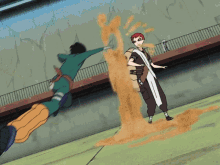
Long before Naruto became the sprawling epic of destiny and gods, there was a single fight that reminded every fan what true strength really means — Rock Lee vs. Gaara. It wasn’t just a clash of power and skill. It was the moment heart triumphed over fate.
In the grand arena of the Chunin Exams, surrounded by shinobi from across the nations, two warriors couldn’t have been more different. Gaara, the sand prodigy — cold, untouchable, encased in an impenetrable defense. And Rock Lee, the boy with no ninjutsu, no bloodline, no gifts — only grit, discipline, and the dream of proving that effort can surpass talent.
From the very first movement, the tension is electric. Lee moves with breathtaking speed, his taijutsu so fluid it feels like art in motion. When he drops his training weights, the air itself trembles — a moment that remains one of anime’s most iconic. What follows is an explosion of raw physicality and passion, Lee’s fists moving faster than the eye can track, every kick landing like a declaration: “I will not be left behind.”
Gaara, for all his monstrous power, meets something he’s never faced before — unyielding spirit. His sand shields, once untouchable, start to falter under the force of Lee’s conviction. Each hit is a rebellion against limitation, a scream from a boy who was told he’d never be enough.
But as the battle wears on, tragedy seeps in. Lee’s body breaks before his will does. Even when crushed, bleeding, and unconscious, his spirit refuses to yield. And in that moment — that unforgettable silence when Gaara stands victorious but hollow — the entire arena knows who truly won.
Rock Lee vs. Gaara isn’t just one of Naruto’s greatest fights — it’s a philosophy etched in motion. It’s the embodiment of what this series stands for: the power of perseverance over perfection, of effort over destiny.
Goku vs. Frieza — The Battle That Defined a Generation
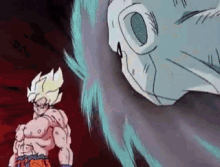
There are fights that entertain, and then there are fights that become myth. Goku vs. Frieza is the moment Dragon Ball Z transcended anime and entered legend — a cosmic war between life and destruction, hope and tyranny, that redefined what it means to go beyond one’s limits.
On the scorched surface of Planet Namek, two forces stand opposed — Frieza, the self-proclaimed Emperor of the Universe, and Son Goku, the Saiyan from Earth who carries humanity’s unyielding will. It’s not just a clash of power; it’s a battle of ideals. Frieza fights for dominance, cruelty, and ego. Goku fights for the fallen — his friends, his race, and the fragile balance of the universe itself.
The tension builds like the planet beneath them, trembling on the edge of collapse. Blow after blow, energy erupts in colors the sky can barely contain. And then — in one of anime’s most defining moments — it happens. The air stills, the ground shatters, and Goku, pushed past the brink of despair, ascends. Golden light floods the battlefield. The first Super Saiyan in a thousand years stands reborn — not out of hatred, but out of pain and resolve.
The transformation is more than spectacle. It’s symbolism incarnate. It marks the evolution of the shōnen spirit — the belief that when the world pushes you past your limits, you create new ones. Goku’s golden aura isn’t just energy; it’s the visual manifestation of humanity’s endless drive to rise again.
Their fight is apocalyptic and intimate all at once — Frieza’s arrogance burning against Goku’s compassion. Even as Namek crumbles, Goku offers mercy to the very monster who murdered his people. And when Frieza rejects it, the end feels biblical — a fallen god struck down by the wrath of the very life he sought to erase.
Goku vs. Frieza isn’t just Dragon Ball Z’s peak — it’s the heartbeat of modern anime. It’s where heroism met transcendence, where pain birthed power, and where one man’s scream echoed across generations.
From Goku’s golden fury against Frieza to Levi’s lightning vengeance on the Beast Titan, these battles remind us why anime is more than a medium — it’s a feeling. A pulse. A reflection of courage, loss, and the unstoppable will to fight when everything seems lost.
Each of these clashes — whether it’s Rock Lee defying fate, Luffy rewriting physics, or Tanjiro finding humanity in demons — captures the soul of what makes anime timeless. These are the moments that raised our heartbeats, gave us chills, and redefined what storytelling through motion and emotion can be.
They are not just fights — they are legacies.
Moments where pain turned to purpose, rage turned to resolve, and animation turned into art.
Hey anime fans! Whether you grew up with Dragon Ball Z, cried through Demon Slayer, or stood in awe of Attack on Titan, celebrate your love for anime with our wide range of official Anime, Marvel, DC, Transformers, LEGO, and more collectibles!
Relive your favorite fights. Rekindle your passion. Start your ultimate collection today!

